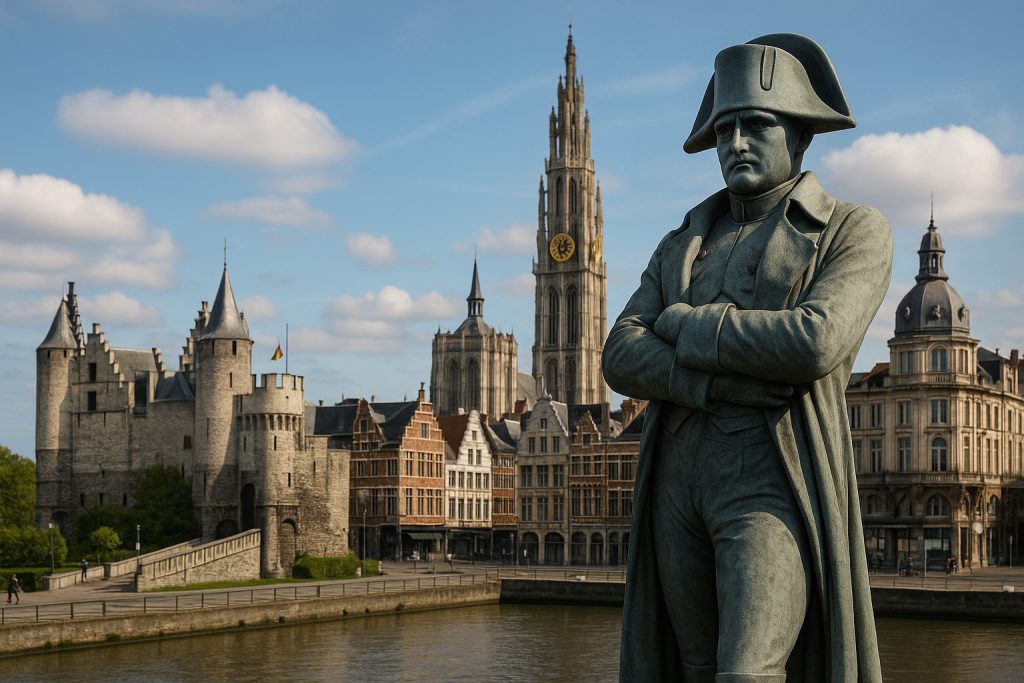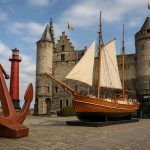When Napoleon Bonaparte marched into the Low Countries, Antwerp found itself drawn into a radical transformation. No longer just a medieval port city, it became a strategic military and economic hub under his command. His vision wasn’t only for empire—it was for infrastructure, logistics, and control. Today, traces of that ambition remain etched into Antwerp’s cityscape.
Military Strategy Meets Urban Planning
Napoleon saw Antwerp as the “pistol aimed at the heart of England.” Its location made it the perfect launch point for his continental ambitions. This military mindset led to significant changes in how the city was organized and built.
Key military-driven projects initiated by Napoleon:
- Expansion of the port: He ordered large-scale dredging and construction to enable the port to support a navy, not just trade ships.
- Naval base infrastructure: Dry docks and shipyards were expanded or constructed from scratch to house the French fleet.
- Fortifications: The city’s defensive structures were reinforced, with new batteries and bastions added to protect against British raids.
These weren’t afterthoughts—they were deliberate steps to mold Antwerp into a military fortress disguised as a commercial city.
The Port of Antwerp: Engineered for Empire
Napoleon’s obsession with logistics turned Antwerp’s port into a tool of war. He launched the construction of the Bonaparte Dock (still named after him), which reshaped the commercial potential of the city. This project wasn’t just about size; it introduced a level of technical sophistication Antwerp hadn’t seen before.
Legacy of Napoleon’s port vision:
- Bonaparte Dock (1811): Still in use today, it set the foundation for Antwerp’s growth into Europe’s second-largest seaport.
- Willemdok (named after King William I later): Though completed after Napoleon’s fall, it was part of his broader blueprint.
- Integrated roadways and quays: These allowed for faster movement of goods and troops—still influencing the city’s transport patterns.
Administrative Reorganization
To ensure full control, Napoleon imposed a centralized administrative structure. Antwerp was absorbed into the French Empire as the capital of the Department of the Two Netes. New civic buildings were constructed, older ones repurposed, and French became the language of bureaucracy.
Changes that reshaped civil life:
- Civic Code implementation: The Napoleonic Code was enforced, altering property rights, civil procedures, and legal governance.
- Reassignment of buildings: Religious institutions lost power as their buildings were turned into military barracks or offices.
- New grid alignments: Streets were restructured to reflect the clarity and control valued by Napoleonic planning.
Architecture as a Statement of Power
Napoleon didn’t just build; he branded. Buildings were constructed with a sense of imperial gravity. Neoclassical designs replaced Gothic whimsy. Uniformity, symmetry, and monumental facades dominated the landscape.
Architectural imprints of Napoleon’s era:
- Customs Houses and warehouses were built with austere, symmetrical layouts.
- Naval academies and training facilities used consistent facades and proportions, signaling military discipline.
- Place de l’Empereur (now Groenplaats): Was reconfigured to reflect urban openness and control.
These structures weren’t built to inspire awe—they were designed to command respect and impose order.
Long-Term Impact on Urban Identity
Napoleon’s tenure in Antwerp was brief, yet the consequences stretched across centuries. His infrastructural groundwork gave future rulers a blueprint for expansion. Even after his defeat, many of his initiatives were maintained, adapted, or completed by the Dutch and later the Belgians.
Why his impact still matters:
- Port infrastructure: Remains the cornerstone of Antwerp’s economic identity.
- Street patterns and quays: Still influence pedestrian and vehicular flow.
- Military zones: Were converted into parks, museums, or civic buildings, but their layouts remain.
A Walkable Timeline of Power
Walking through Antwerp today is like tracing a living map of Napoleonic ambition. From docks to fortifications, civic buildings to repurposed barracks, the city carries the fingerprints of a leader who saw urban design as an extension of control. His influence didn’t just mark buildings—it shaped the city’s purpose.


